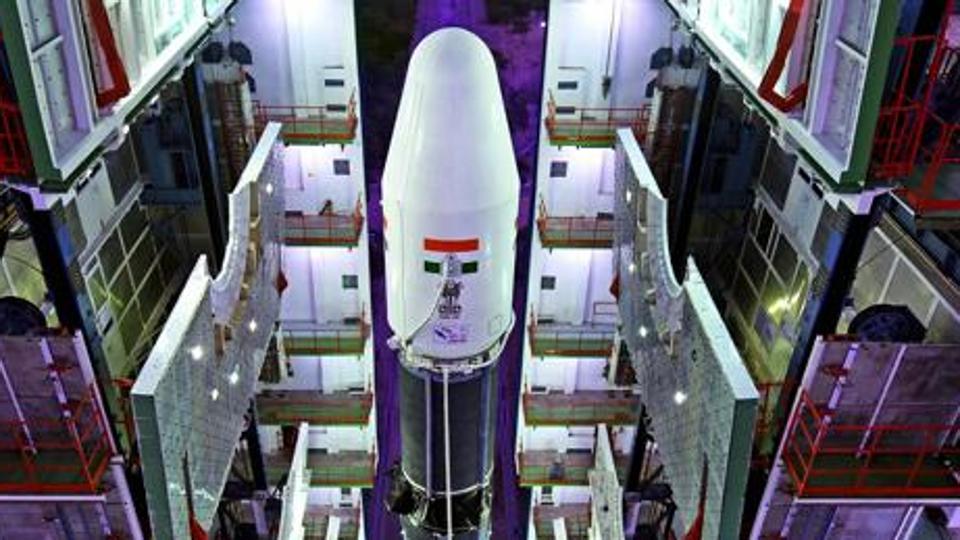Indian Prime Minister Narendra Modi: we will send the flag of the country into space aboard the Gaganyana in 2022

Photo of a fully assembled GSLV-F08 launch vehicle inside a vertical assembly building, Shriharikot. Photo source: PTI File Photo
Today, Indian Prime Minister Narendra Modi, during a speech dedicated to Independence Day of India, said that in 2022, in honor of the 75th anniversary of the country's independence, the Gaganyaan (Gaganian), “heavenly ship” spacecraft with the crew on board .
Narendra Modi: “I am pleased to announce that we want to send a person into space - it is still unknown, a man or a woman - and this person will certainly hold in our hand our national tricolor ; most likely, this will happen in 2022, during the celebration of India’s 75th anniversary of independence, and maybe a little earlier. ”
Thus, India can become the fourth power to send a man into space on its own, after the USSR, the USA and China (in 2022, by the way, Denmark wants to launch its first cosmonaut).
')
The Indian Space Research Organization (Indian Space Research Organization, ISRO) announced a manned space flight program called Vyom (“Wyom”, “sky”) about ten years ago; most likely, it will be a flight to a low reference orbit on a triple spacecraft launched by our own production Mark GSLV III launch vehicle.
The plans of ISRO indicated two unmanned missions, and then one manned on LEO lasting from five to seven days. The development and design of the spacecraft is already in full swing.
As you know, in 2007, India carried out an experiment on the return of a 550-kilogram orbiter, which returned safely to Earth after 12 days in space, which indicates the presence of technologies to create materials suitable for protection against heat in the atmosphere; and in July of this year, ISRO, in the Satish Dhavan Space Center, tested the crew’s emergency rescue system, one of the most critical systems in case of emergencies with a manned spacecraft.
In addition, India has successfully completed missions to the Moon and Mars.
The first Indian lunar probe, Chandrayan-1, went to its destination in October 2008 and worked until August 2009. The start of the second, Chandrayaan-2, is scheduled for January 2019; during this mission, a landing vehicle must be landed near the south pole of the moon.
And Mangalyaan (“Mangalyan, literally“ Martian apparatus ”) or Mars Orbiter Mission (MOM) - the first Indian interplanetary station, was launched by ISRO on November 5, 2013; since September 24, 2014, she is still working in Mars orbit.
Source: https://habr.com/ru/post/420301/
All Articles